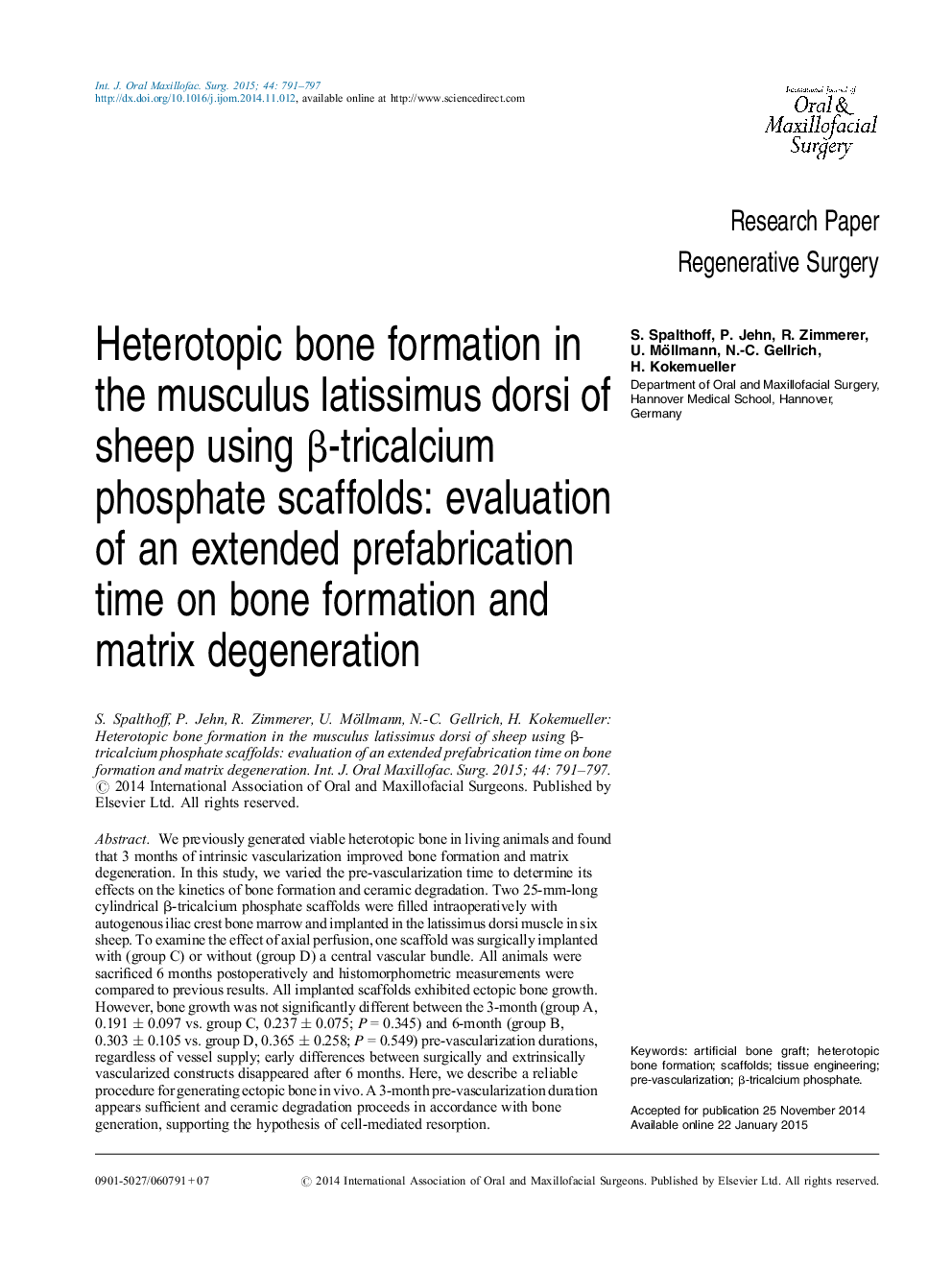| Article ID | Journal | Published Year | Pages | File Type |
|---|---|---|---|---|
| 3131923 | International Journal of Oral and Maxillofacial Surgery | 2015 | 7 Pages |
We previously generated viable heterotopic bone in living animals and found that 3 months of intrinsic vascularization improved bone formation and matrix degeneration. In this study, we varied the pre-vascularization time to determine its effects on the kinetics of bone formation and ceramic degradation. Two 25-mm-long cylindrical β-tricalcium phosphate scaffolds were filled intraoperatively with autogenous iliac crest bone marrow and implanted in the latissimus dorsi muscle in six sheep. To examine the effect of axial perfusion, one scaffold was surgically implanted with (group C) or without (group D) a central vascular bundle. All animals were sacrificed 6 months postoperatively and histomorphometric measurements were compared to previous results. All implanted scaffolds exhibited ectopic bone growth. However, bone growth was not significantly different between the 3-month (group A, 0.191 ± 0.097 vs. group C, 0.237 ± 0.075; P = 0.345) and 6-month (group B, 0.303 ± 0.105 vs. group D, 0.365 ± 0.258; P = 0.549) pre-vascularization durations, regardless of vessel supply; early differences between surgically and extrinsically vascularized constructs disappeared after 6 months. Here, we describe a reliable procedure for generating ectopic bone in vivo. A 3-month pre-vascularization duration appears sufficient and ceramic degradation proceeds in accordance with bone generation, supporting the hypothesis of cell-mediated resorption.
